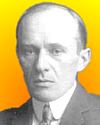
On 17 Nov 1926, Carl E. Akeley died, an American naturalist and explorer who developed the taxidermic method for mounting museum displays to show animals in their natural surroundings. His method of applying skin on a finely molded replica of the body of the animal gave results of unprecedented realism and elevated taxidermy from a craft to an art. He mounted the skeleton of the famous African elephant Jumbo. He invented the Akeley cement gun (1911) to use while mounting animals, and the Akeley camera which was used to capture the first movies of gorillas. In the 1920s Akeley made a large specimen collection, part of the American Museum's famous African mammal hall. From 1919, using the skills he had acquired making clay models of animals to design taxidermy exhibits, Akeley also created a series of bronze animal casts.
Akeley knew Theodore Roosevelt (before he became U.S. President) from travelling together in 1909 on an expedition to Africa in the big game country. When Roosevelt died, there was a special memorial issue of Natural History magazine, in which Akeley wrote his reminisceces of their travel in Africa. His article 'Theodore Roosevelt and Africa' was subtitled 'The Man Who Felt the Attraction of Live in the Silent Places and the Wide Waste Spaces of the Earth.' In addition to Akeley's description of their camp, there is an equally long quotation on 'Africa—In the Words of Roosevelt.' That makes this article twice as fascinating to read.

On 17 Nov 1878, Hans Zinsser was born, an American bacteriologist and immunologist who isolated the typhus germ and perfected a method to produce large quantities of anti-typhus vaccine. Today's book pick is: Rats, Lice and History (Social Science Classics Series), by , is a timeless classic (from 1934, reprinted) about the histories of microbial diseases, rats, and lice, and the scientists and doctors who combatted them. This book combines science, history, biography, literature, and other fields into an elegant but grim package of broad erudition and darker humor. To Zinsser, scientific research was high adventure and the investigation of infectious disease, a field of battle. IKn a change of perspective, he presents the viewpoint that infectious disease simply represented an attempt of a living organism to survive, though to a human, it is an invading pathogen. In presenting epidemic infectious disease as a major force in human affairs, Zinnser's book remains a masterpiece of science writing for a general readership.
It is available from Amazon, typically about New from $39.46. Used from $3.87. (As of earlier time of writing - subject to change.)
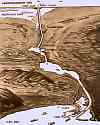
On 10 Oct 1913, Atlantic and Pacific oceans waters met through the Panama Canal as a construction blast made the first connection. President Woodrow Wilson pressed a button in Washington that carried a signal by telegraph to Panama. A dynamite charge was ignited that blew a hole in the Gamboa Dike allowing the waters to mingle in the final cut between the oceans. Today's book pick is: , by , a Pulitzer Prize-winning master of historical narrative telling the epic chronicle of the creation of the Panama Canal.
It is available from Amazon, typically about (As of earlier time of writing - subject to change.)

On 17 Nov 1869, the Suez Canal was opened. Today's book pick is: Parting the Desert: The Creation of the Suez Canal, by Zachary Karabell who lays out the epic story of the greatest engineering feat of the nineteenth century and how it changed the world. It began as the inspiration of the ambitious, energetic French diplomat and entrepreneur Ferdinand de Lesseps who masterminded the project. He supervised fifteen years of financial challenges, technical obstacles, and political intrigues. There were challenges of financing, construction and disease to overcome. But the inauguration in 1869 captured the imagination of the world. The author reflects also on the origins of the modern Middle East.
It is available from Amazon, typically about New from $11.79. Used from $2.04. (As of earlier time of writing - subject to change.)
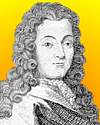 | After some experiments made one day at my house upon the phosphorus, a little piece of it being left negligently upon the table in my chamber, the maid making the bed took it up in the bedclothes she had put on the table, not seeing the little piece. The person who lay afterwards in the bed, waking at night and feeling more than ordinary heat, perceived that the coverlet was on fire. |
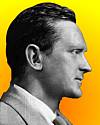 | ... [I]nfectious disease is merely a disagreeable instance of a widely prevalent tendency of all living creatures to save themselves the bother of building, by their own efforts, the things they require. Whenever they find it possible to take advantage of the constructive labors of others, this is the path of least resistance. The plant does the work with its roots and its green leaves. The cow eats the plant. Man eats both of them; and bacteria (or investment bankers) eat the man. ... |
 | Physics is becoming so unbelievably complex that it is taking longer and longer to train a physicist. It is taking so long, in fact, to train a physicist to the place where he understands the nature of physical problems that he is already too old to solve them. |
| Before you look at today's web page, see if you can answer some of these questions about the events that happened on this day. Some of the names are very familiar. Others will likely stump you. Tickle your curiosity with these questions, then check your answers on today's web page. | |
| Births | |
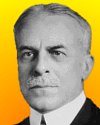 | William Merriam Burton, born 17 Nov 1865, was an American chemist who developed a thermal cracking process for crude petroleum. He recognized the need for altering the methods of refining crude oil at the turn of the century and understood that he could squeeze more power from every molecule of petroleum. What was his goal with thermal cracking? |
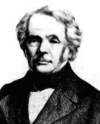 | August Möbius was a German astronomer and mathematician remembered for his Möbius strip. It can be made by taking a strip of paper tape, making a 180 degree twist in its length and joining the two ends of the strip together, forming a two-dimensional surface. What is remarkable about the surface so formed? |
| Deaths | |
 | John Evershed (1864-1956) was an English astronomer who discovered (1909) the Evershed effect - the horizontal motion of gases outward from the centres of sunspots. While photographing solar prominences and sunspot spectra, he made a discovery about the Fraunhofer lines in the sunspot spectra. What was this discovery and how did it relate to the Evershed effect? |
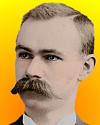 | Herman Hollerith (1860-1929) was an American inventor of an important precursor of the electronic computer. His invention was applied to the 1890 U.S. census to automate the sorting of data. It saved the United States 5 million dollars for the 1890 census by completing the analysis of the data in a fraction of the time it would have taken without it. What was his invention? |
| Events | |
 | On 17 Nov 1869, the 100-mile Suez Canal was opened in Egypt, linking two seas and enabling an important transportation route between Europe and Asia, which remains vital today. Which two seas are linked by the Suez Canal? |
 | On 17 Nov 1976, an atmospheric test of a hydrogen bomb produced the most powerful blast ever (to date, as of 2011). Equivalent to 4 megatons of TNT, it was reportedly 320 times greater than the atomic bomb dropped on Hiroshima. Which country exploded the 1976 H-bomb with the most powerful blast ever? |
Fast answers for the previous newsletter for November 16: French • the bends is a nitrogen solubility problem when rapid pressure changes experienced in deep diving cause the formation of bubbles of the gas in the blood, tissues and joints • refrigeration and scientific research at low temperatures and very high vacuums • the study of geometric properties and spatial relations unaffected by the continuous change of shape or size of figures • corn (maize) • decade containing the year 1945.
 If you enjoy this newsletter, the website, or wish to offer encouragement or ideas, please send feedback by using your mail reader Reply button.
If you enjoy this newsletter, the website, or wish to offer encouragement or ideas, please send feedback by using your mail reader Reply button. Your click on a Facebook, StumbleUpon, or other social button on the site webpages is also a welcome sign of appreciation. Thank you for using them.
© This newsletter is copyright 2020 by todayinsci.com. Please respect the Webmaster's wishes and do not put copies online of the Newsletter — or any Today in Science History webpage. (If you already have done so, please remove them. Thank you.) Offline use in education is encouraged such as a printout on a bulletin board, or projected for classroom viewing. Online, descriptive links to our pages are welcomed, as these will provide a reader with the most recent revisions, additions and/or corrections of a webpage. For any other copyright questions, please contact the Webmaster by using your mail reader Reply button.
--
If you do not want to receive any more newsletters, Unsubscribe
To update your preferences and to unsubscribe visit this link
Executive Real Estate Business Class
-
"It was like a man with wings. It wasn't like anything you'd see on TV or in a monster movie." ...
About the publisher
Search This Blog
Blog Archive
-
▼
2020
(1542)
-
▼
November
(164)
- Last day to save! Take advantage of Black Friday d...
- On This Day for November 30 - Independence of Barb...
- Newsletter for Monday 30 November.
- November 30: Cnut the Great, the 1st State to Abol...
- FAMILY: Happiness in a stressful season
- Medieval monarchs | WW1 quiz | Marlborough pie recipe
- On This Day for November 29 - United Nations resol...
- Newsletter for Sunday 29 November.
- November 29: Edison's Phonograph, Schrödinger's Ca...
- The Compass: Italy
- See the past through a different lens with Nat Geo...
- On This Day for November 28 - Opening of Tehrān Co...
- Newsletter for Saturday 28 November.
- November 28: Exploration, Invention and a Day of F...
- PHOTOGRAPHY: How adversity inspired discovery for ...
- The gift of curiosity lasts a lifetime. Give Nat G...
- Very Weird — And Very Real — Facts About The Victo...
- Black Friday Deals: Save 50% on a Britannica Membe...
- Black Friday Savings at the HISTORY Store
- On This Day for November 27 - Nobel Prizes establi...
- Newsletter for Friday 27 November.
- November 27: The Model Parliament, the 1st Native ...
- ANIMALS: The pets I’m thankful for
- A Very Special Thanksgiving Edition Of Our Newsletter
- On This Day for November 26 - Premiere of Casablan...
- Newsletter for Thursday 26 November.
- YOUR WEEKLY ESCAPE: They live in a legendary under...
- November 26: 1st National Thanksgiving, Alice in W...
- SCIENCE: The prehistoric truth about turkeys
- UPDATED: Every Membership Now 50% Off!
- Every Membership Now 50% Off!
- Demystified: Is the Ozone Layer Finally Healing It...
- On This Day for November 25 - Japanese military ba...
- Newsletter for Wednesday 25 November.
- November 25: Dynamite and The Mousetrap
- TRAVEL: Keeping your family safe over the holidays
- Meet The Real-Life "Dexter" — Serial Killer Of Mur...
- On This Day for November 24 - Dutch discovery of T...
- Newsletter for Tuesday 24 November.
- November 24: 1st Transit of Venus Observed, Van Di...
- HISTORY: The faces of COVID-19’s toll
- New This Week on History News Network
- On This Day for November 23 - Ley Juárez passed, I...
- Newsletter for Monday 23 November.
- November 23: On This Day in History
- FAMILY: Keeping the holidays familiar for your kids
- The many faces of Anne Boleyn | Take our Tudors qu...
- On This Day for November 22 - U.S. President John ...
- Newsletter for Sunday 22 November.
- November 22: Vasco da Gama Rounds the Cape and JFK...
- The Compass: Hawaii
- On This Day for November 21 - Signing of Mayflower...
- Newsletter for Saturday 21 November.
- November 21: The Mayflower Compact, a Jewish state...
- CORONAVIRUS UPDATE: 200,000 new cases in a single day
- PHOTOGRAPHY: Switching tactics to chronicle the wo...
- How The Kennedy Curse Has Tormented America's Firs...
- On This Day for November 20 - Mexican Revolution l...
- The Roundup Top Ten for November 20, 2020
- Newsletter for Friday 20 November.
- November 20: Uyghurs Conquer China, the Napoleonic...
- ANIMALS: The deadly thing about snakes
- Give your kids a love of learning with Nat Geo Kid...
- #1 Gift for Families this Holiday - On Sale Now!
- On This Day for November 19 - Anwar Sadat's visit ...
- Newsletter for Thursday 19 November.
- November 19: "Four Score and Seven Years Ago..."
- YOUR WEEKLY ESCAPE: Not all of the dinosaurs died
- SCIENCE: Can we make North America’s greatest reso...
- The Latest News from History News Network
- On This Day for November 18 - Jonestown massacre, ...
- Newsletter for Wednesday 18 November.
- November 18: St. Peter's Basilica is Consecrated a...
- TRAVEL: Best of the World 2021
- Black Friday Early Access! 50% off Holiday Bundles...
- Photographer Captures the Impacts of Climate Chang...
- On This Day for November 17 - Arnold Schwarzenegge...
- Newsletter for Tuesday 17 November.
- November 17: On This Day in History
- HISTORY: Thanksgiving in tough times
- New This Week on History News Network
- On This Day for November 16 - Election of Bhutto a...
- Newsletter for Monday 16 November.
- November 16: Francisco Pizarro Ambushes Atahualpa,...
- FAMILY: Keeping kids kind during this stressful time
- The Crown S4 | Henry VIII's seventh wife | Vikings...
- On This Day for November 15 - Palestinian statehoo...
- Newsletter for Sunday 15 November.
- November 15: The Scramble for Africa and the Vietn...
- The Compass: Peru
- On This Day for November 14 - Eritrea made a provi...
- Newsletter for Saturday 14 November.
- CORONAVIRUS UPDATE: The U.S. enters uncharted terr...
- November 14: Kirch's Comet, Einstein's Theory of L...
- PHOTOGRAPHY: In the land of Arctic dreams
- The Unhinged Soldier Who Avenged Lincoln's Assassi...
- The Roundup Top Ten for November 13, 2020
- On This Day for November 13 - Terrorist attacks in...
- Newsletter for Friday 13 November.
- ANIMALS: Images to surprise and delight during thi...
-
▼
November
(164)
-
Blogroll
-
About
HistoryFact










0 comments:
Post a Comment